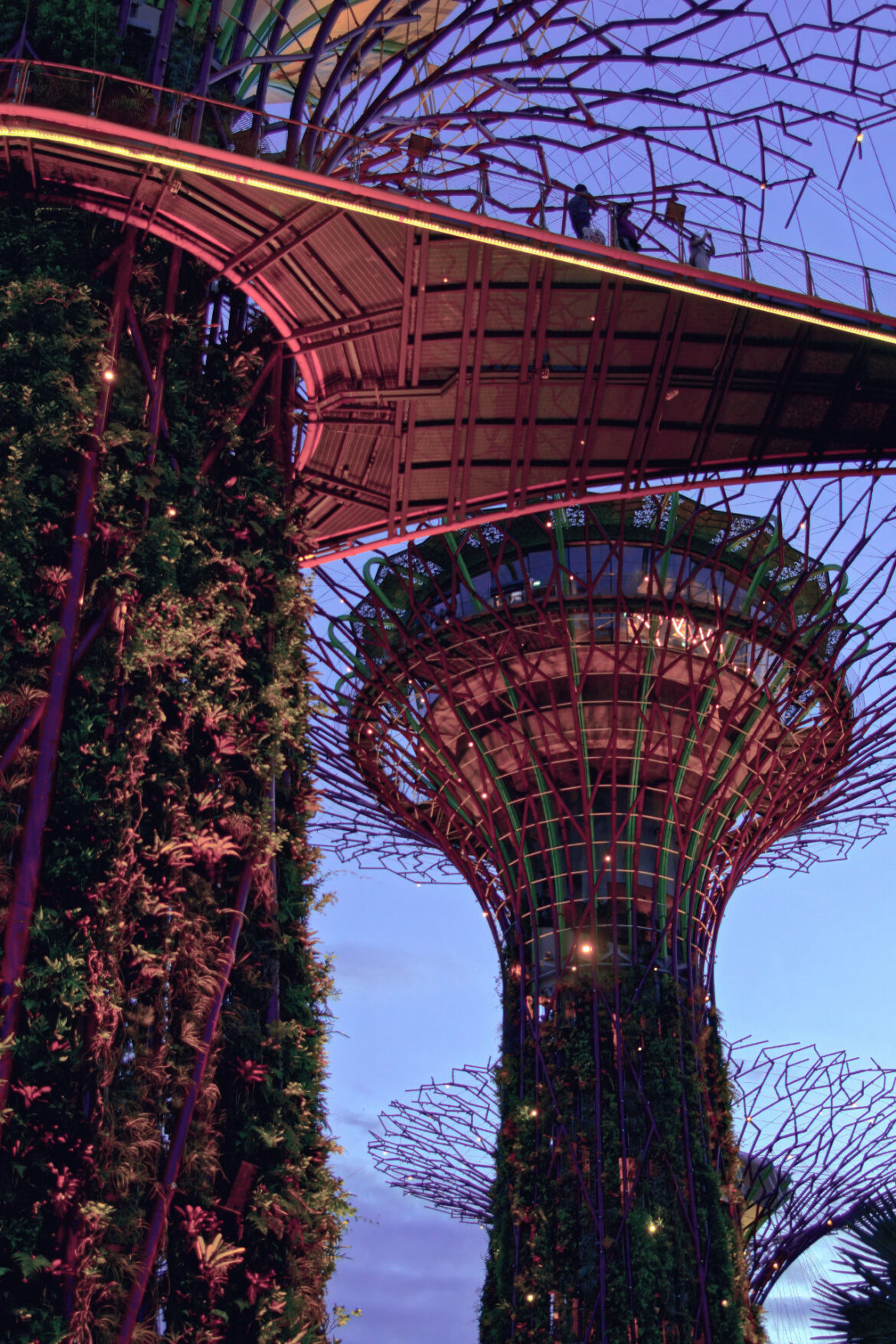By: XEONIQ [ Instagram | Tumblr ]
Even as the sun begins to set on the bustling urban metropolis of Singapore, its twilight remains in the grip of a hot, unrelenting miasma. Located just one degree north of the Equator, the city-state experiences a climate where the humidity is pervasive year-round. Night after night, I wandered through its bustling finance centre and shopping hubs, swathed in my usual military-inspired technical gear or sometimes a custom-made, lightweight nyco suit; the near unbearable heat inducing a constant sheen of perspiration.
After a long day, planning out and executing a considered photography project feels out of the question. Yet still the self-actualised need to create remains. The solution that I, and many others, have settled on, is to have a camera always by one’s side to take unplanned, spur-of-the-moment “street shots”. This has helped immeasurably in honing my skillset and aesthetic interests, documenting my comings and goings for different eras of my life, and even in developing somewhat of a unique style over time. But one by-product of that haphazard process, especially for digital photography, is a glut of unedited images to sort, prune and edit, if not share.
Today, as I sit combing through, vetting and jettisoning the digital photos from a far too bloated archive, I find myself reminiscing on those night walks in Singapore. Rough gems that I had initially written off began to coalesce into the following set that I’ve curated below.
Through my often-times weary and over-heated perspective, here lies the fragments of Singapore’s luminous nightscape from the short time when I once lived there.

Shining logo-emblazoned high rises buzzing in white collar commerce tower over the back alleys where the working-class logistics of Singapore’s street-level “biz” meld into a practical if not dilapidated reality. True to the city’s reputation, while lacking an attractive façade, such access lanes still maintain a degree of tidiness and order.
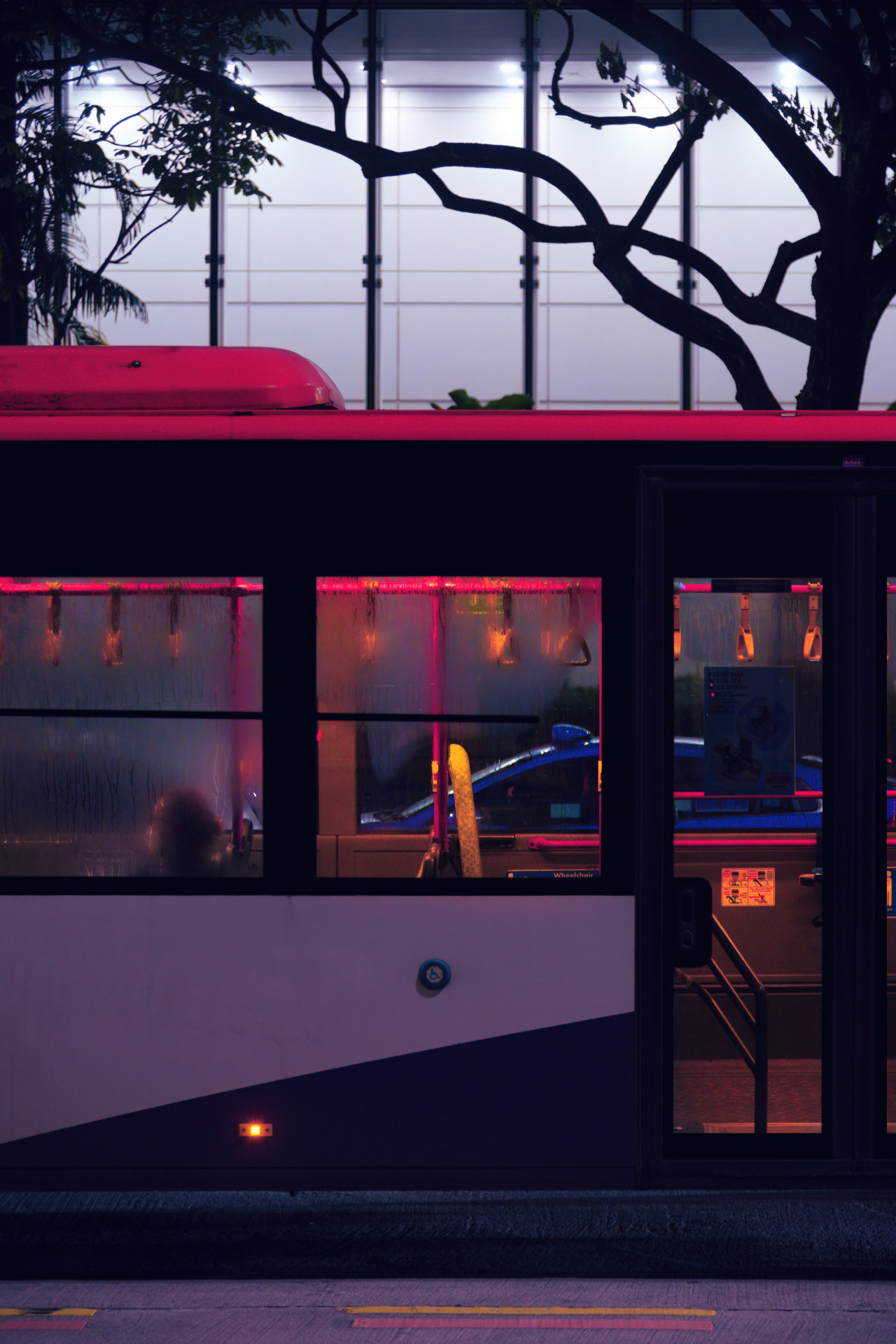
Locals ferry between air-conditioned oases in crisply-cooled buses and autonomous subway systems, condensation providing a misty veil of anonymity to pedestrian would-be voyeurs.
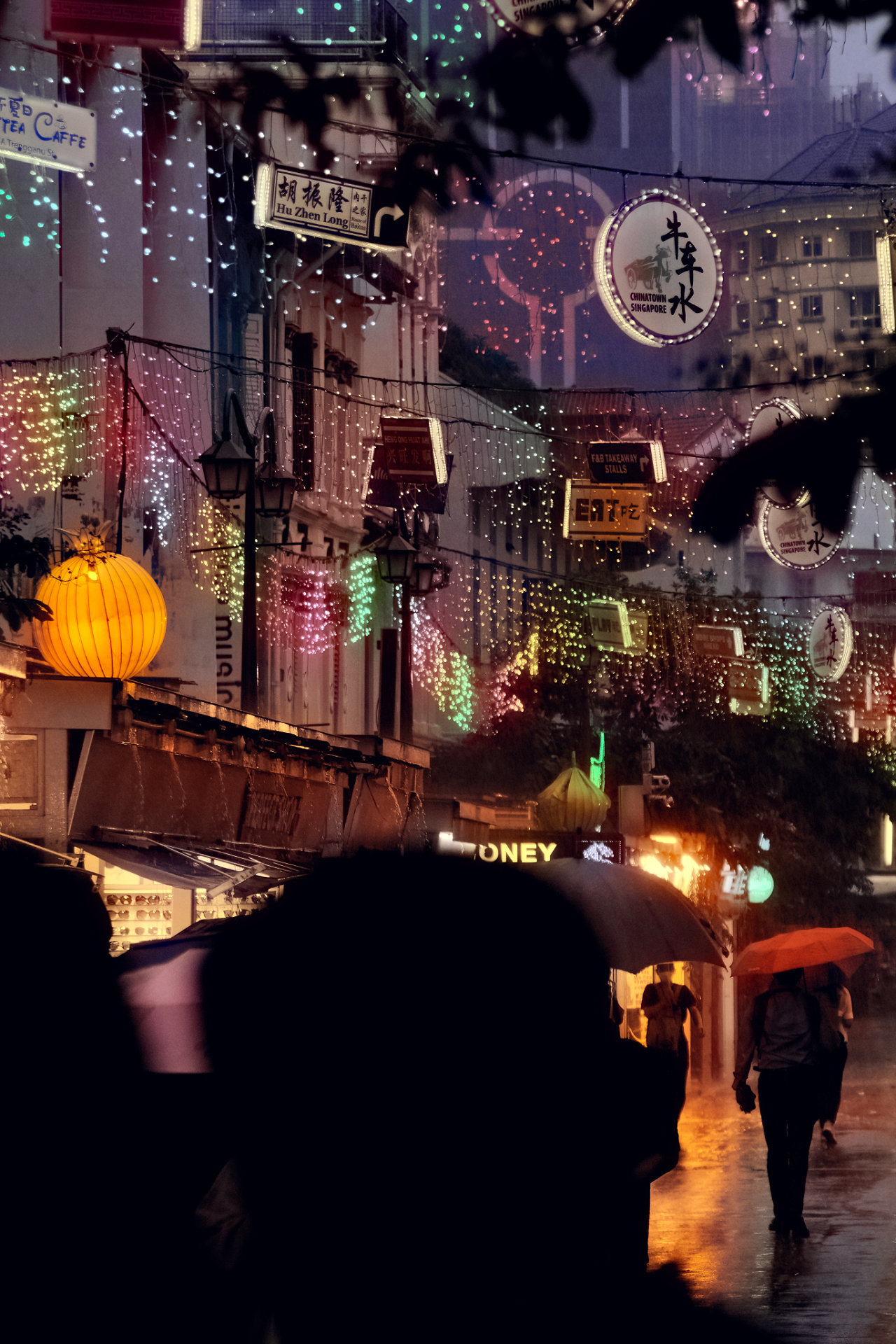
China Town: In the rain at night, it’s going to look cool no matter which city in the world you are in.
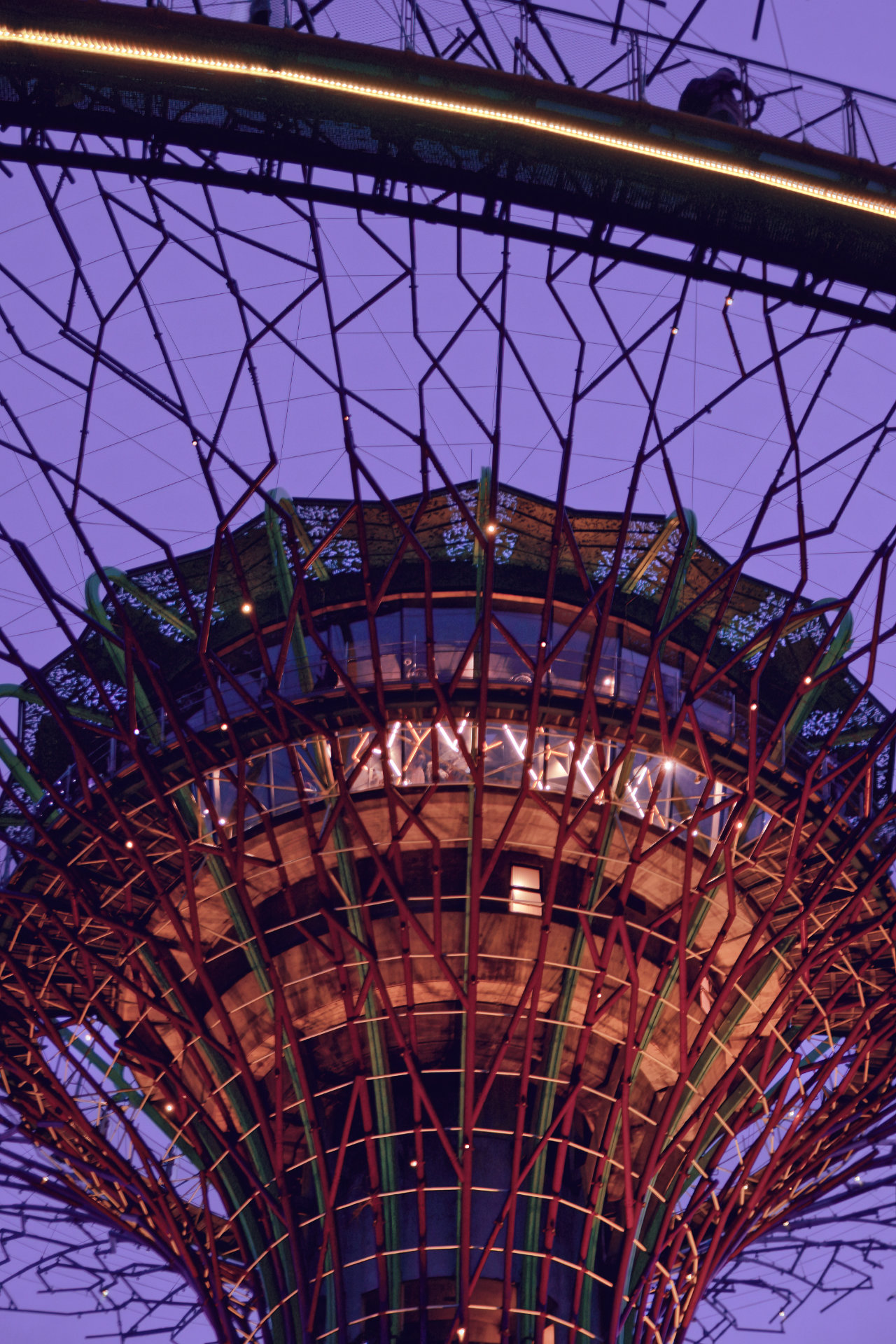
In an equatorial city with jungle-like flora and overgrowth, the towering neon behemoths in Gardens by the Bay, aptly named “Super Trees” serve as a kind of giant metallic god for the rest of Singapore’s plant-life to worship.
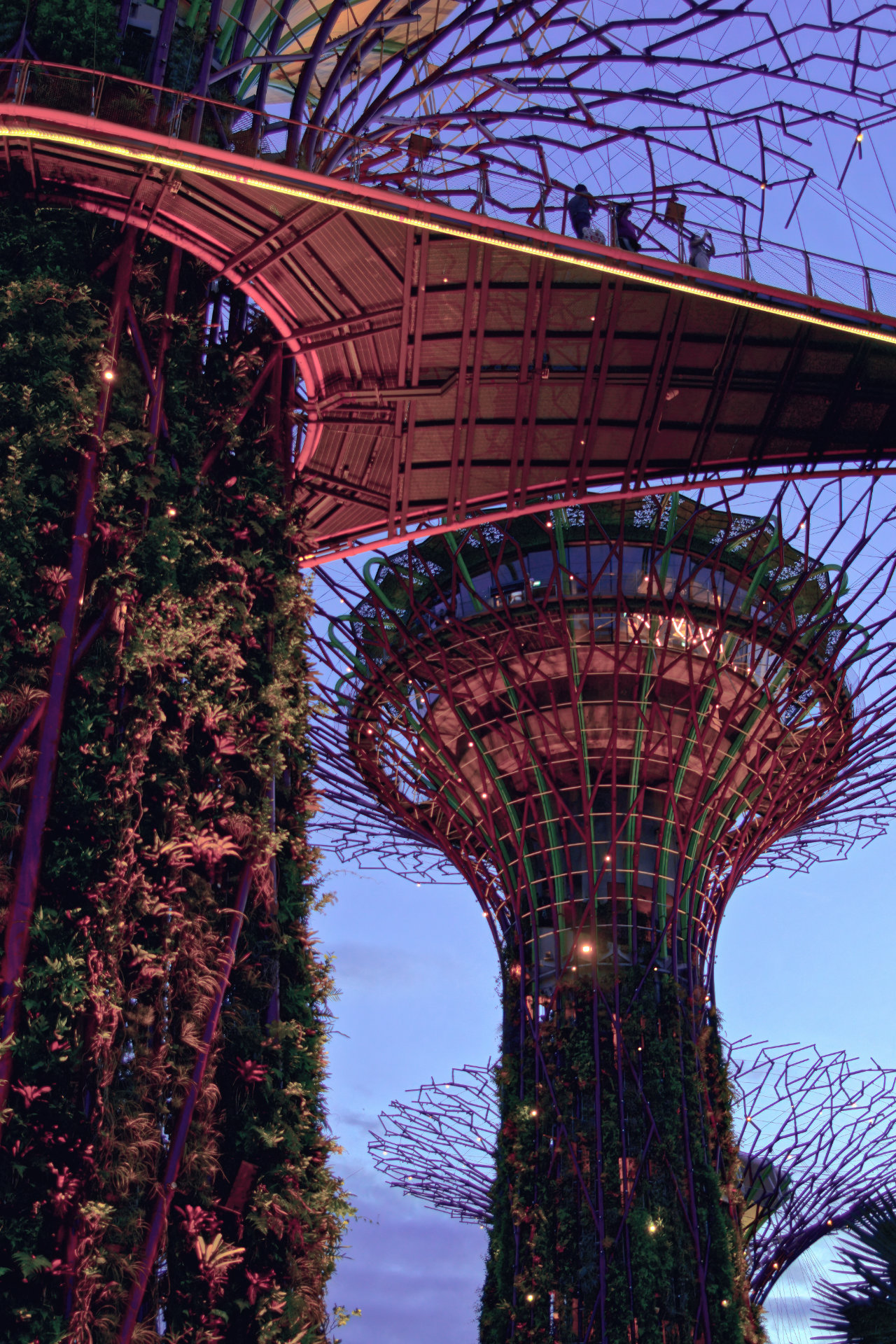
Despite Singapore having a world-renowned botanical gardens, aside from its gratefully-cooled green house, I actually preferred the somewhat gaudy Gardens by the Bay. The spectacle of the Super Trees’ scale, and the seemingly endless wave of foreign visitors to the lofty walkways surrounding them, gave me the impression of a retro-futuristic interstellar space station – where travelers from around the galaxy may meet on their way to different systems.
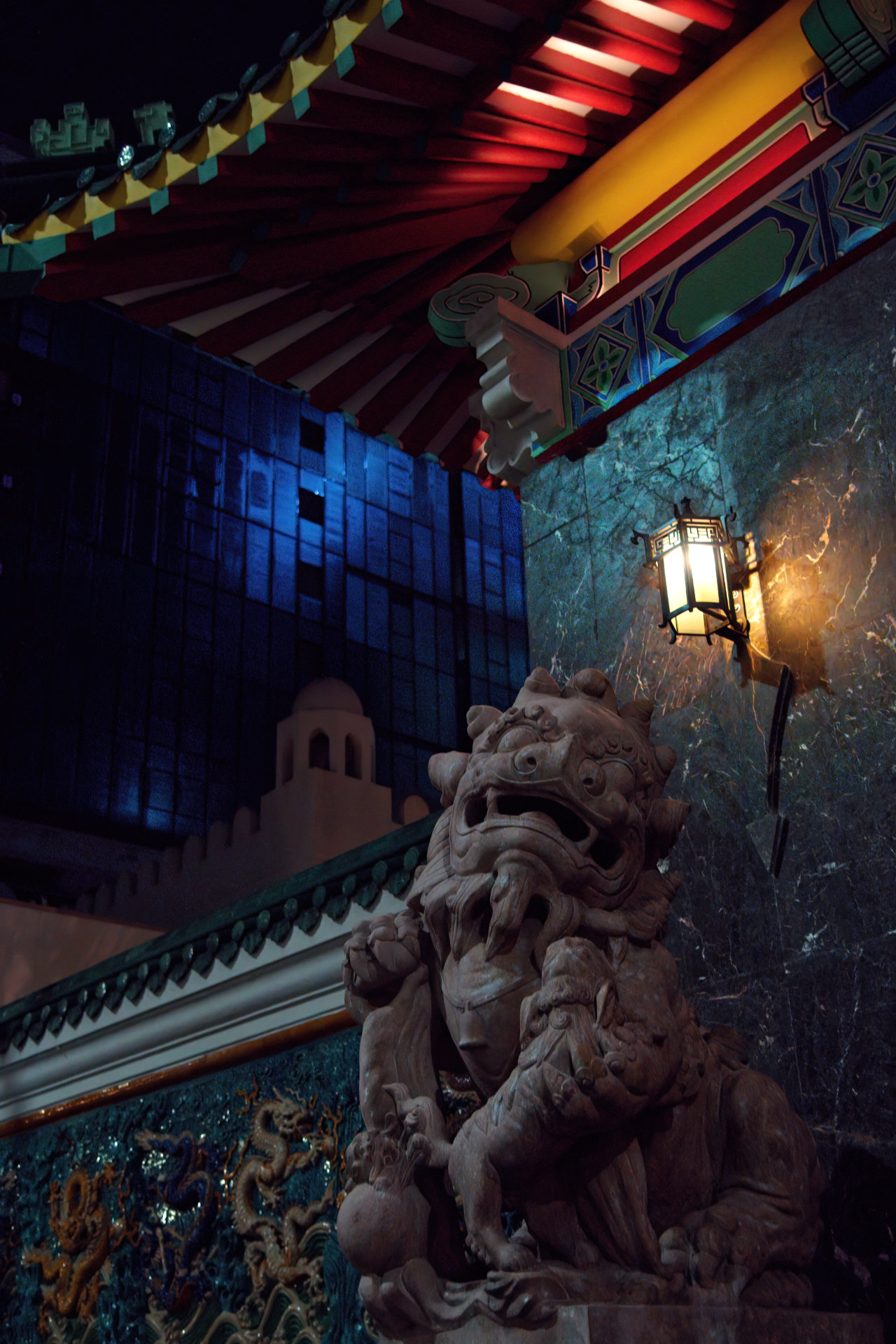
A granite-carved leonine sentry guards a newly-erected centre for Chinese business, standing in aesthetic defiance to the pervasive globalised economic and cultural fist that has gripped most of the developed world. These vestiges of the old world and traditional cultures persevere despite modern capitalism’s unrelenting materialist homogenisation of our public spaces.
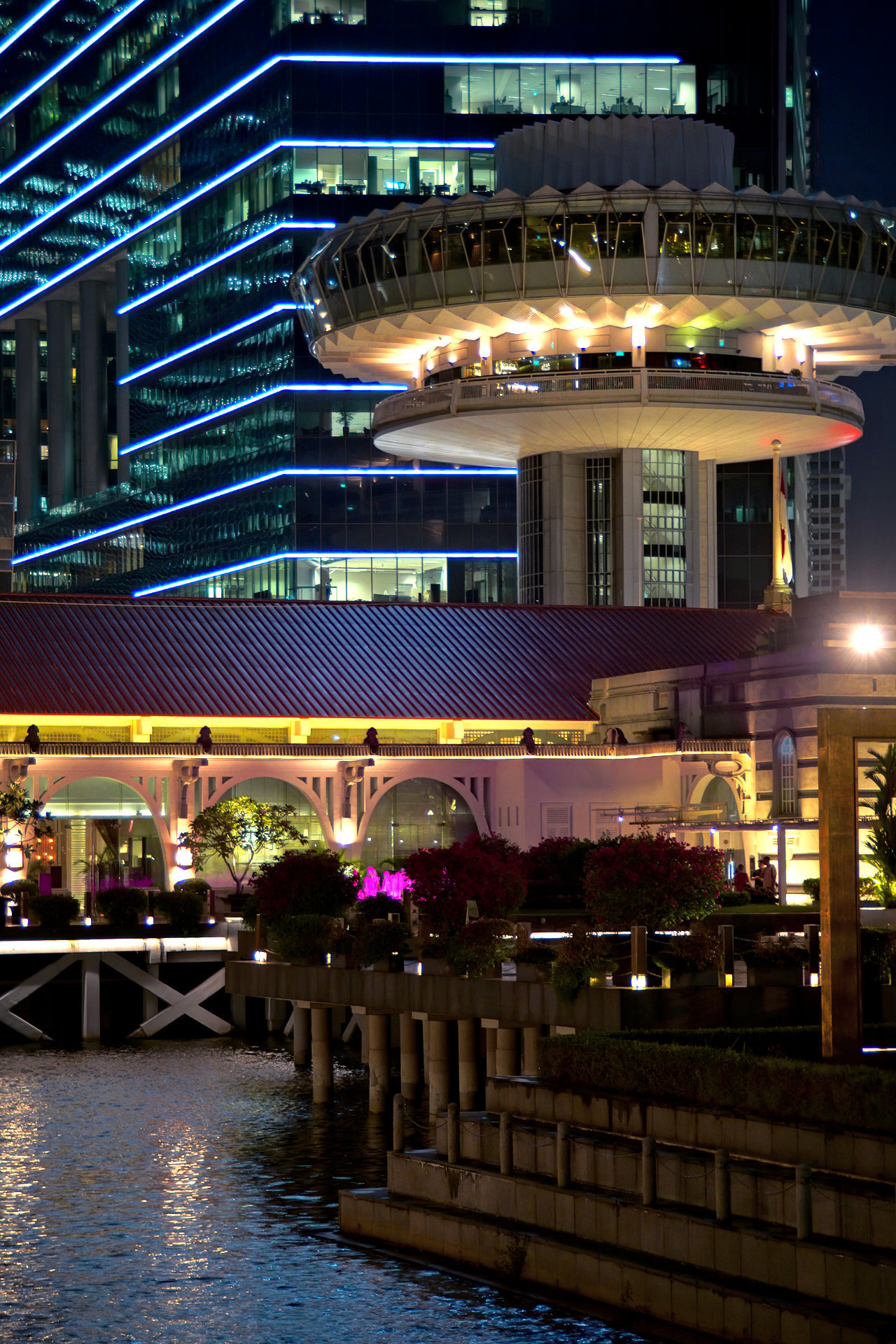
Singapore is nothing if not multicultural, in a pluralistic sense; and here curated gardens, British colonial architecture, late 20th century Asian futurism, and the ubiquitously postmodern glass on steel all meld together into a disjointed, yet not unattractive, amalgamation of styles.
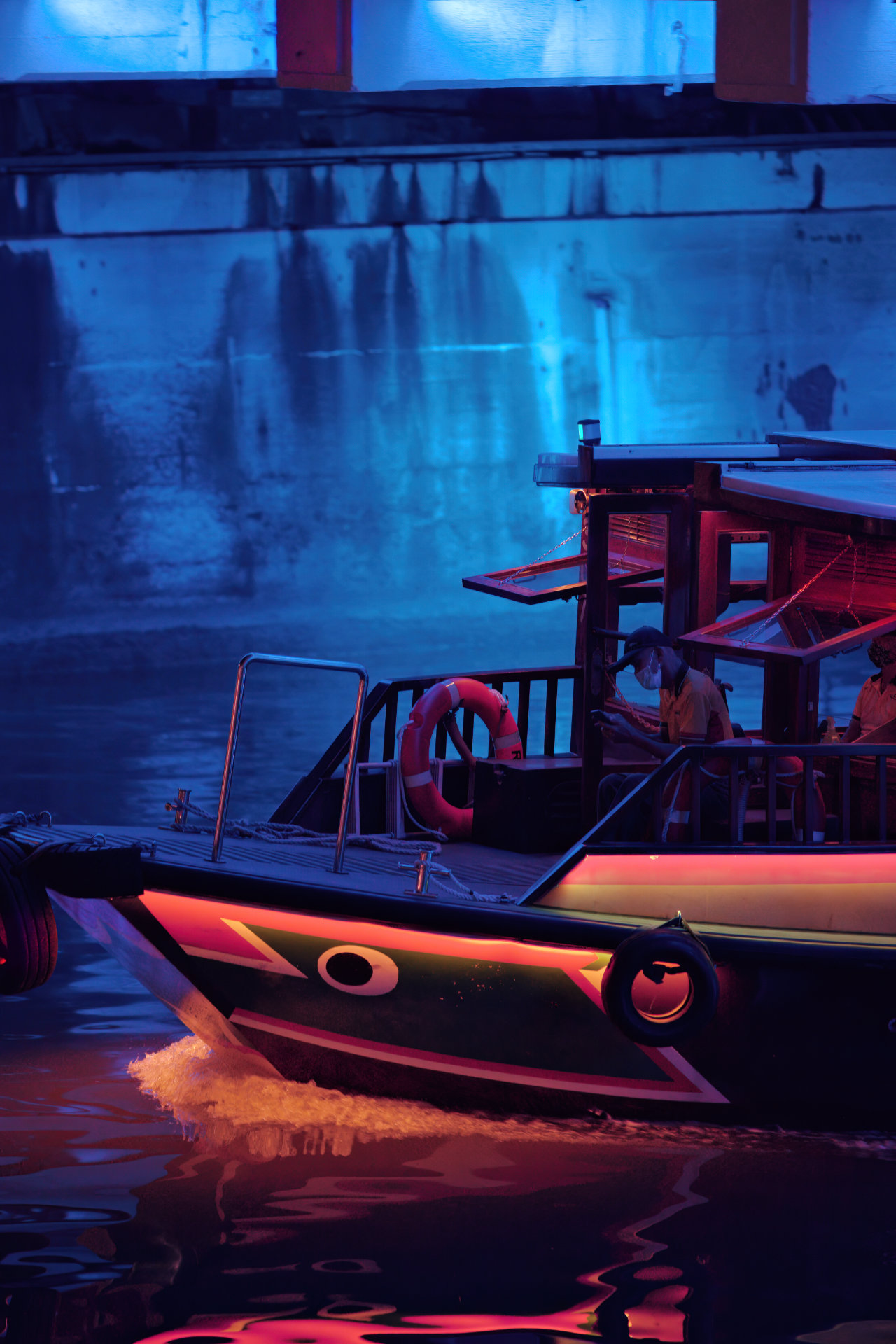
While lacking the extensive canal system of Venice, graphically painted sightseeing boats retrofitted with neon-lights and classical wooden trim traverse lazily in one of the few waterways that intersect Singapore.
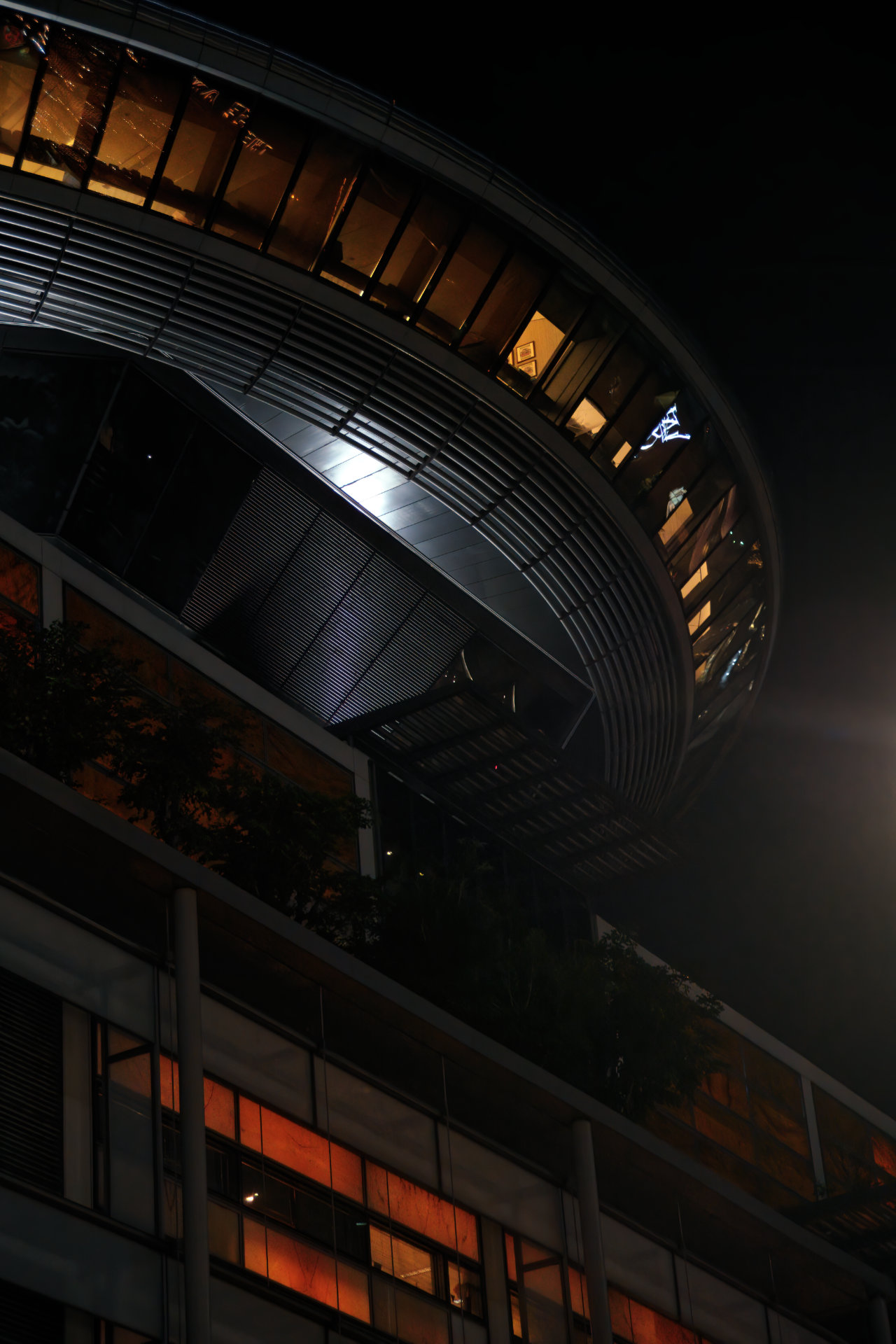
This saucer-shaped building was one of several in this style that loomed over the more conventional high rise buildings in the city’s downtown area.
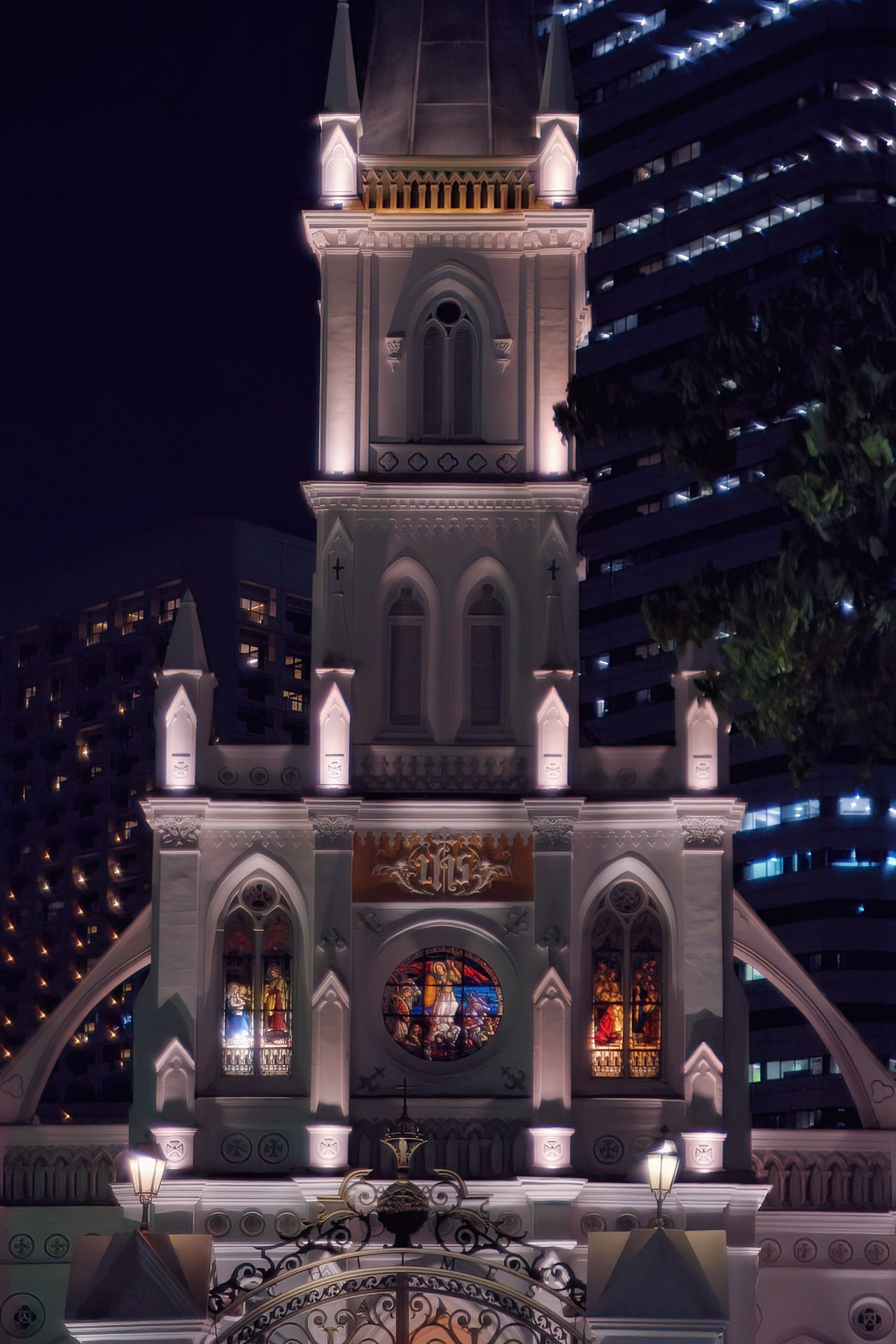
CHIJMES (pronounced “chimes”) stands for the Convent of the Holy Infant Jesus, and is a Neo-Classical style building that has been “saved” via refurbishment by being converted to a mixed-vendor food and beverage retail spaced. Built in the 1840’s, it’s a beautiful structure that has survived postmodern globalisation via its own conversion to a more capitalist-friendly structure.

While small in size compared to most nations, Singapore is very affluent and large construction developments can be found all around the island, forever evolving and changing the space.
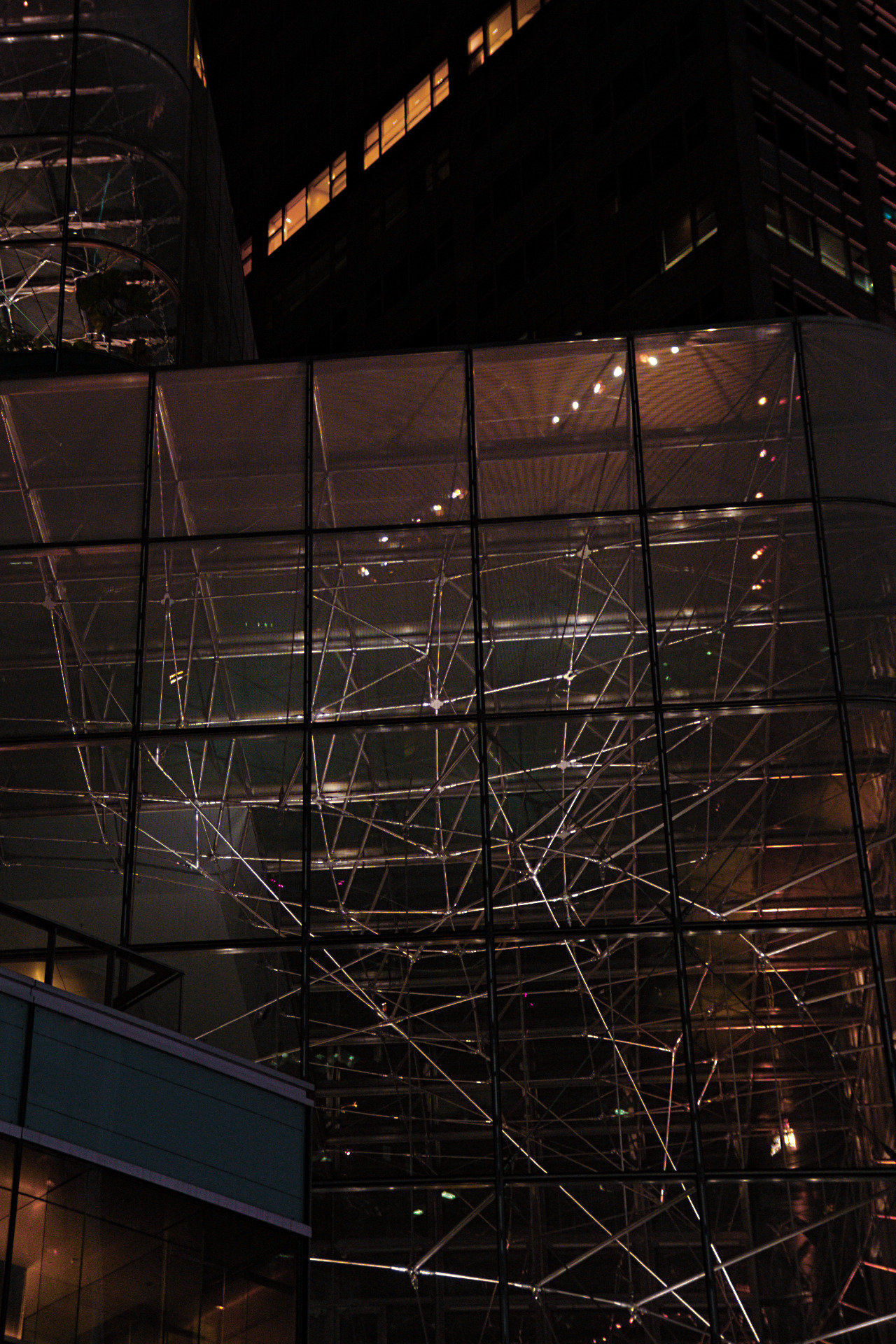
The interior lattice work, on I believe Orchard Road, has a decidedly arachnid quality – trapping stray artificial light rather than insects in its refractive web.
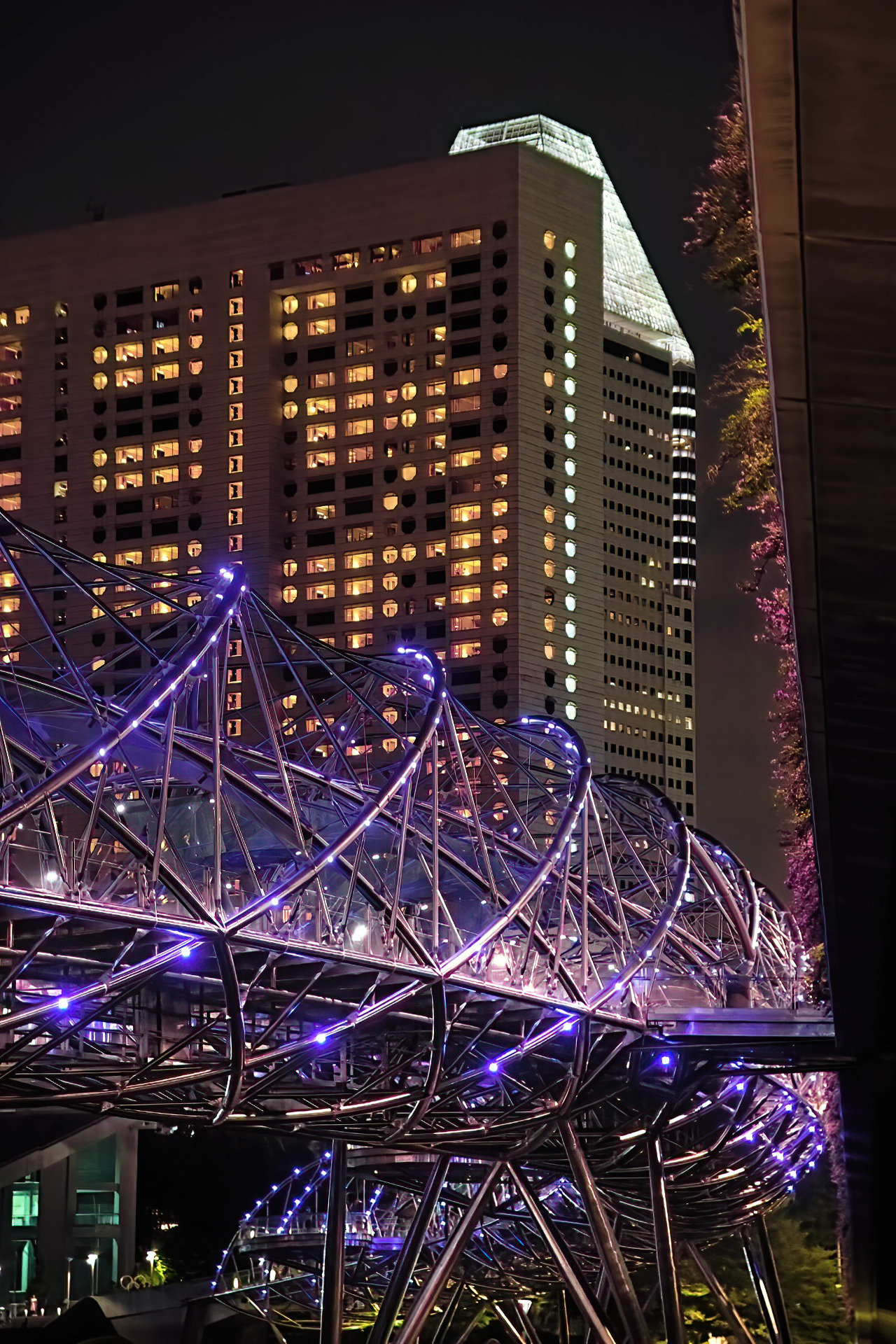
The Helix bridge is a pedestrian arterial walkway at the Marina Centre, illuminated at night with an organically rhythmic sequence of shifting prismatic lights.
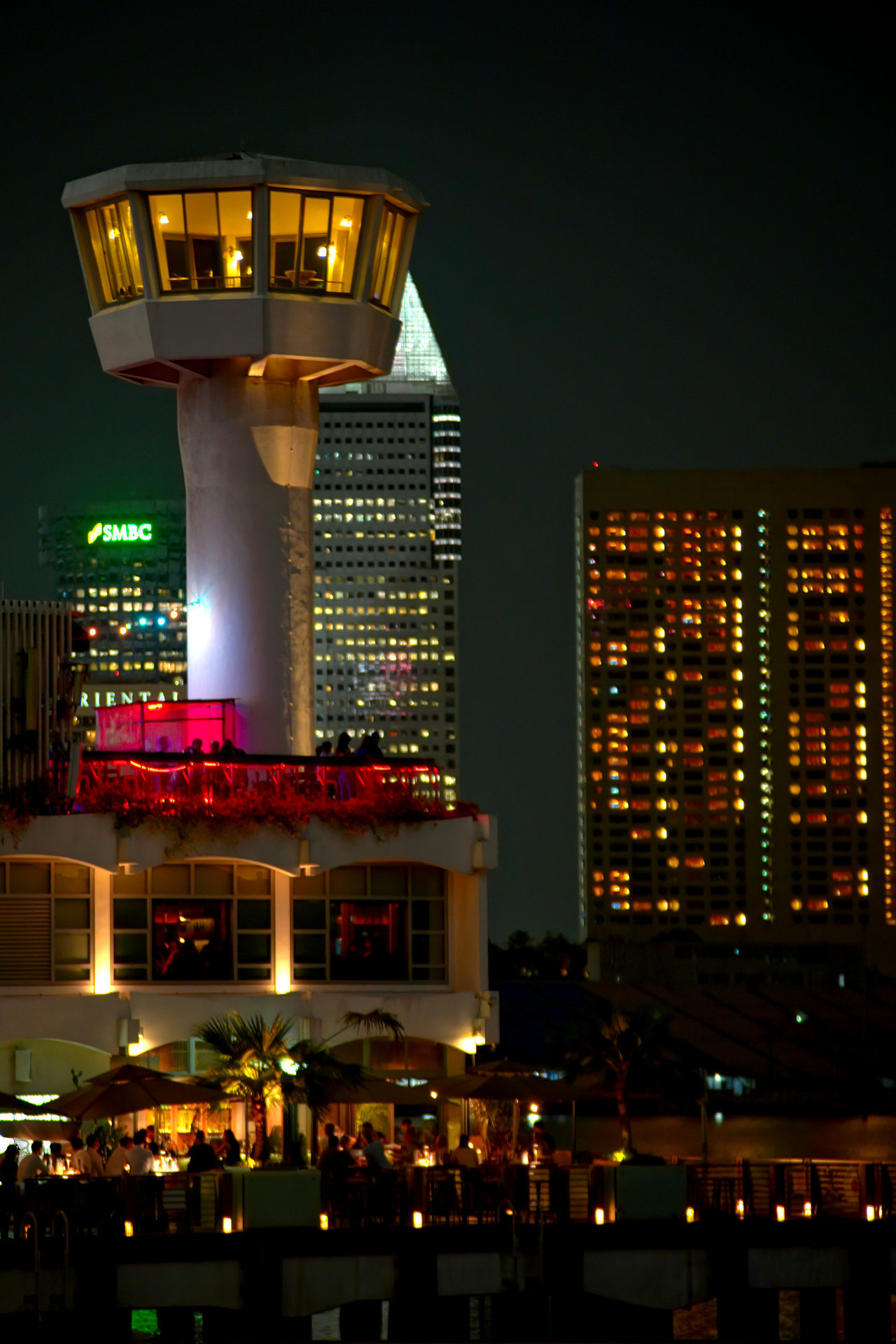
Singapore’s Marina is always bustling with social activity and on the waterfront diners turn revelers as diverse as the varied architecture they patronise.
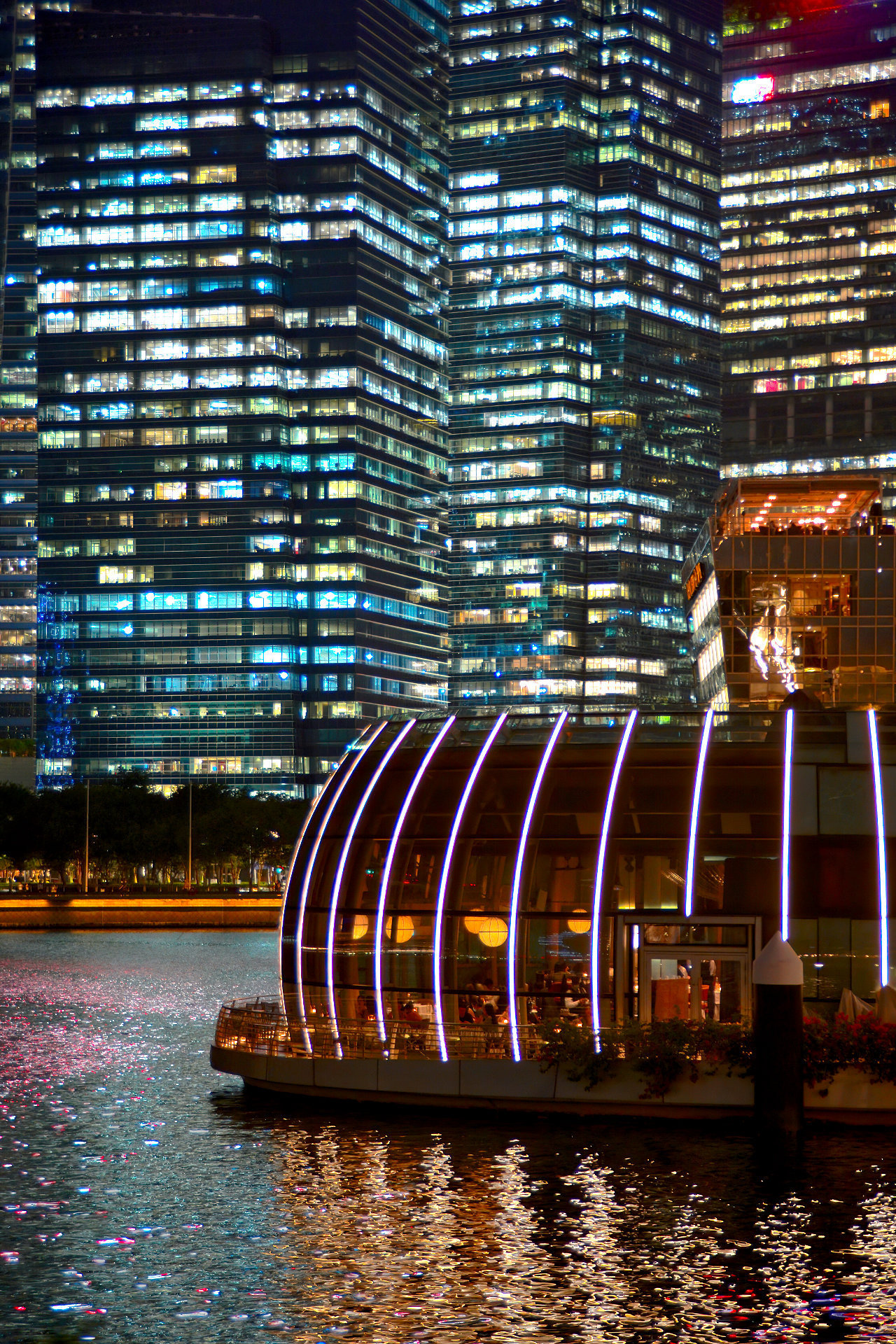
For those considering a visit to Singapore, I do believe that it is worth seeing at least once in your lifetime. It is a small city and two or three days should be ample to explore and take in its aesthetic vibrancy. Just be prepared for the heat and humidity – and to eat very well.
If you liked the images in this set, you can see more of my photography on my Tumblr or Instagram.
If you enjoyed this article, supporting SHELLZINE by any amount can be made via the link below. Your contribution is completely optional and all funds help cover the website’s growing hosting costs and enable further original content creation without the use of advertisements. Secure payments by all major card types, including Google Pay and Apple Pay, are supported.

